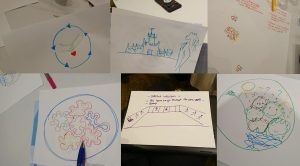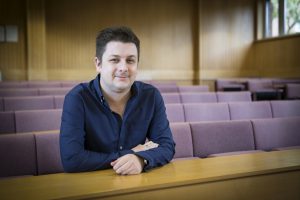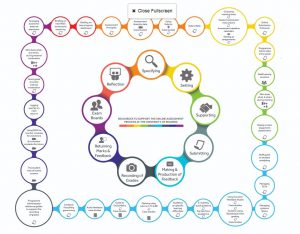Dr Allán Laville, School of Psychology and Clinical Language Sciences
Overview
In the training of Psychological Wellbeing Practitioners (PWPs), it is crucial to support students in the development of their reflective thinking and writing skills. Therefore, I implemented the Self-Practice/Self-Reflection (SP/SR; Bennett-Levy, 2001) approach into our PWP training programmes. Impact was measured by asking students to complete questionnaires on their experience of SP/SR and the results informed my PGCAP research project.
Objectives
- To improve the level of support and guidance for reflective thinking and writing within the programme.
- To support students to review their current clinical practice and to create action points in order to develop their practice based on the use of SP/SR.
Context
As part of the BPS PWP national curriculum, students are required to complete summative pieces of reflective writing based on their clinical practice. This is contained within the Evidence-based low-intensity treatment of common mental health problems module (PY3TRT1 and PYMTRT) in both PWP training programmes at the University.
Implementation
The first step was to review the current literature on SP/SR to see how we could implement this approach in the training of low-intensity Cognitive Behavioural Therapy (LICBT) for PWPs. Previous use of this approach was for Cognitive Behavioural Psychotherapists who completed training over two years, whereas PWPs train over 9 months, and so there is significantly less time for implementation.
Based on the length of the training programme, we agreed on including 6 SP/SR activities. We then explored the three different components to this. The first component, which was already in the programme, is for students to receive teaching on a LICBT intervention, such as Behavioural Activation i.e. supporting patients with depression to increase their amount of routine, necessary, and pleasurable activities. The second component, which was new to the programme, was for students to practice completing the LICBT intervention on themselves to identify what went well and what could have gone better. The third component, which was also new to the programme, was for students to then blog about their experience via the discussion board feature on Blackboard.
Impact
The student feedback, elicited in the questionnaires, were very positive with comments such as ‘practicing the intervention and then blogging about it really made me see the difficulties that patients might face’ and ‘completing SP/SR really made me review my current practice and see what I can do to improve. Our experience of including the SP/SR training was presented at the National British Association of Behavioural and Cognitive Psychotherapies Conference at the University of Birmingham. Overall, I think that the activity did meet the objectives however, an unexpected outcome was the need to reduce the number of activities due to student feedback.
Reflections
In relation to the success of the activity, the consultation with other Clinical Educators and Programme Directors (both at Reading and other Universities) enabled us to implement the activity with very little difficulty. Furthermore, within our teaching, we provide an ‘Introduction to SP/SR’ session so students are informed of the evidence-base for this approach, what the requirements are for SP/SR on our programmes, as well as when they will need to complete the activity, and how to post their experiences on Blackboard. This has been commented on as very useful within student feedback.
In relation to better implementation, the earlier versions of the activity included 6 SP/SR tasks however, students commented that whilst SP/SR is very useful, they found completing 6 tasks too much when considering the rest of their workload. Therefore, we reduced the number to 4 SP/SR tasks, which has been working well.
Follow up
In the previous two years, we have developed our practice by providing students with the opportunity to receive written staff feedback on one of their SP/SR blogs. The student feedback in regard to this has been very positive and we have seen an improvement in the reflective writing skills of our students in their summative reflective assignments.





